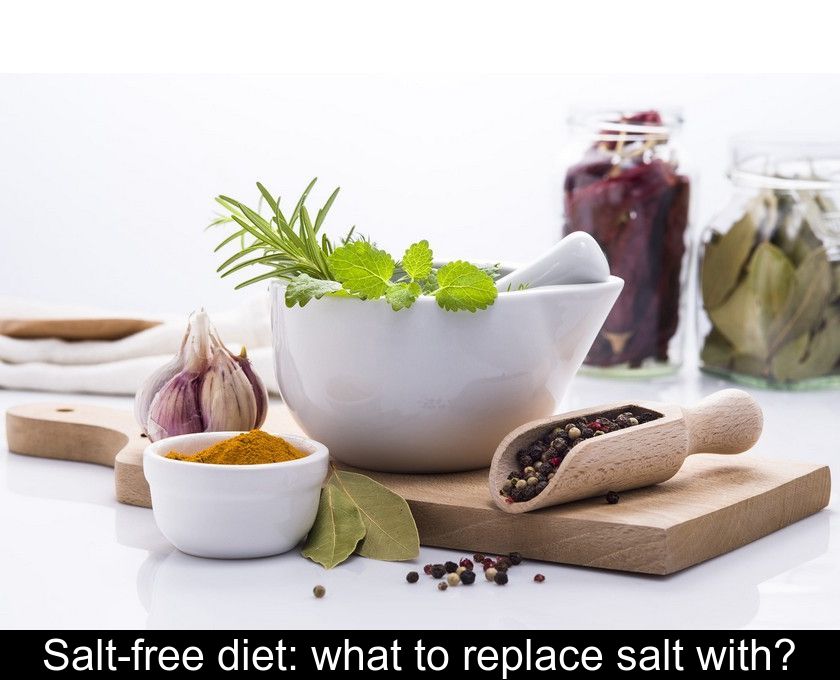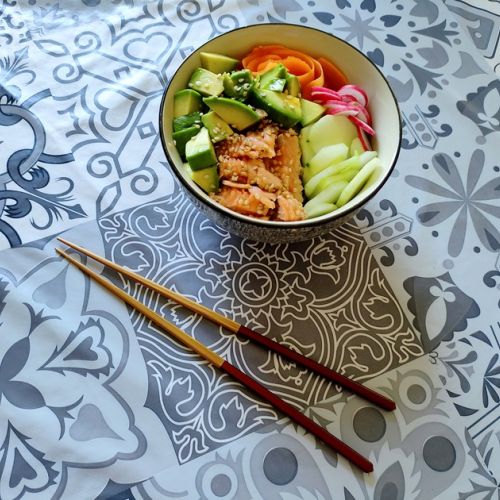Salt-free Diet: What To Replace Salt With?
If you have certain heart or kidney diseases, your doctor may have prescribed a salt-free diet. Patients with high blood pressure should also be careful about their intake and reduce it as much as possible. But it's not easy to replace this essential condiment in the kitchen. To help you, here are 5 tips to replace salt in your dishes.
1- Replace the salty flavor with the acidic flavor
Among the basic flavors, the acidic taste is the one that is closest to the salty taste on the tongue.
That's why the first trick to replacing salt is to add a dash of lemon juice to your plate.
Lemon juice can enhance the taste of a fish fillet or a pan-fried vegetable.
Following the same logic, you can also use cider vinegar in cooking.
This vinegar made from the fermentation of apple juice contains only 5 mg of sodium per 100 g.
By incorporating cider vinegar into your recipes, it will make the dish seem saltier. You can even put it in the cooking water for pasta or rice.
2- Spice up dishes with spices
The reason salt is so essential in cooking is because it acts as a flavor enhancer. Fortunately, this is also the case with other condiments like spices.
To enhance the taste of a dish, we often think of pepper, chili, paprika, curry and ginger.
However, the most effective trick to avoid salt is to use not one spice, but a mixture of spices and aromatics.
Here is a recipe for a homemade blend you can try to replace salt:
1 teaspoon ground pepper
1 teaspoon onion powder
1 teaspoon dried basil
1/2 teaspoon paprika
1/2 teaspoon garlic powder
1/2 teaspoon sumac
To note: sumac is a reddish-brown spice widely used in Oriental cooking, especially Lebanese and Turkish cuisine. It has a fruity, tangy taste reminiscent of lemon.
3- Use aromatic herbs without moderation
The third tip for replacing salt is to use aromatic herbs to flavor your dishes.
You can, of course, chisel them into a cottage cheese sauce or at the last minute on your plate.
You can also incorporate them into a vinaigrette or pesto with olive oil and pine nuts.
In the kitchen, don't hesitate to use bouquets garnis that you make yourself with celery stalks, bay or sage leaves, dried thyme and rosemary sprigs to spice up all your sauces and broths.
To enhance a simple pasta dish, you can for example try our recipe for pasta with pesto and lemon by skipping the salt and reducing the amount of parmesan.
Or try our tabbouleh recipe: rich in lemon juice, fresh mint and peppers, it doesn't need salt to be tasty!
4- Abusing alliums
Some people don't like their strong taste, yet garlic, shallots and onions are great ways to add flavor to your dishes without adding salt.
If you digest them well, use them raw in your salads.
In all other preparations such as vegetable stir-fries, homemade tomato sauce, meat or fish dishes, sauté them in a drizzle of olive oil before adding the other ingredients.
5- Use salt-free condiments
For convenience, you can also buy salt-free condiments in stores.
Did you know that you can find on specialized sites very low salt Dijon mustard?
Just put a little on the edge of your plate to spice up the taste of a meat.
You can also add a spoonful at the end of cooking to prepare chicken with mustard: add light cream and chopped chives and you will get a smooth and tasty sauce.
Finally, if you don't have the time to make your own spice blend following the recipe above, you should know that the brand Aromandise offers a line of substitutes called Ciao le sel !
These are spice and vegetable blends with very little sodium (see link below).
Good to know
Even if you don't have cardiovascular disease or high blood pressure, it is a good idea to reduce your salt intake.
In France, the average consumption is around 12 grams per day per person, while health authorities have just lowered the recommended rate from 6 grams to 4 grams per day.
It is not easy to respect these recommendations because salt is found everywhere, especially in cheeses and industrial dishes.
For a more reasonable consumption, it is therefore necessary to get into the habit of cooking homemade food and not to resalt one's plate before having tasted it.





